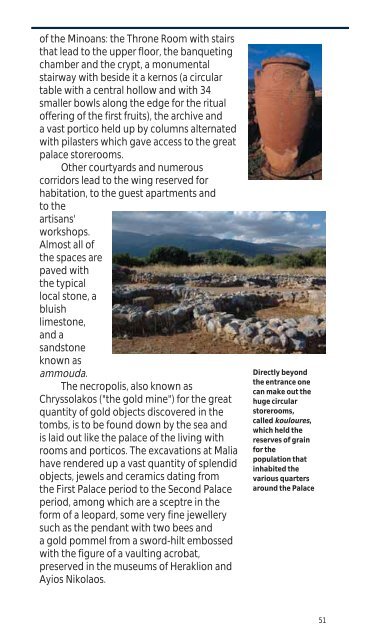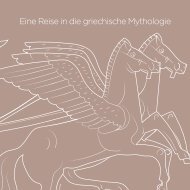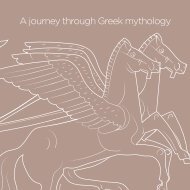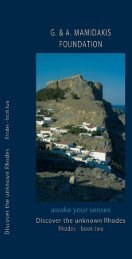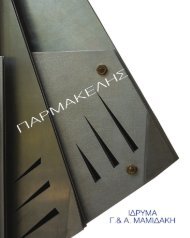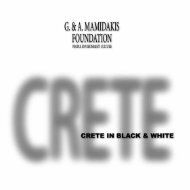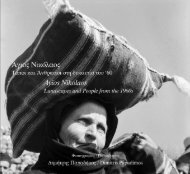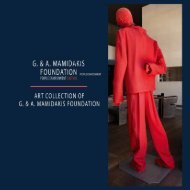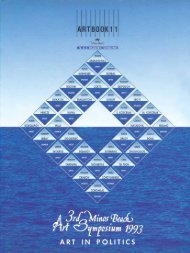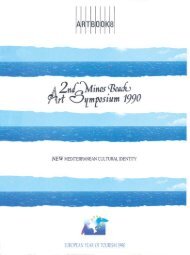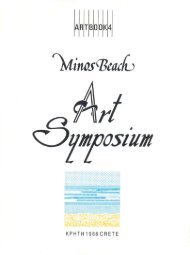EASTERN CRETE
Discover the unknown Crete. Easter Crete, Book one G&A MAMIDAKIS FOUNDATION
Discover the unknown Crete. Easter Crete, Book one
G&A MAMIDAKIS FOUNDATION
You also want an ePaper? Increase the reach of your titles
YUMPU automatically turns print PDFs into web optimized ePapers that Google loves.
of the Minoans: the Throne Room with stairs<br />
that lead to the upper floor, the banqueting<br />
chamber and the crypt, a monumental<br />
stairway with beside it a kernos (a circular<br />
table with a central hollow and with 34<br />
smaller bowls along the edge for the ritual<br />
offering of the first fruits), the archive and<br />
a vast portico held up by columns alternated<br />
with pilasters which gave access to the great<br />
palace storerooms.<br />
Other courtyards and numerous<br />
corridors lead to the wing reserved for<br />
habitation, to the guest apartments and<br />
to the<br />
artisans'<br />
workshops.<br />
Almost all of<br />
the spaces are<br />
paved with<br />
the typical<br />
local stone, a<br />
bluish<br />
limestone,<br />
and a<br />
sandstone<br />
known as<br />
ammouda.<br />
The necropolis, also known as<br />
Chryssolakos ("the gold mine") for the great<br />
quantity of gold objects discovered in the<br />
tombs, is to be found down by the sea and<br />
is laid out like the palace of the living with<br />
rooms and porticos. The excavations at Malia<br />
have rendered up a vast quantity of splendid<br />
objects, jewels and ceramics dating from<br />
the First Palace period to the Second Palace<br />
period, among which are a sceptre in the<br />
form of a leopard, some very fine jewellery<br />
such as the pendant with two bees and<br />
a gold pommel from a sword-hilt embossed<br />
with the figure of a vaulting acrobat,<br />
preserved in the museums of Heraklion and<br />
Ayios Nikolaos.<br />
Directly beyond<br />
the entrance one<br />
can make out the<br />
huge circular<br />
storerooms,<br />
called kouloures,<br />
which held the<br />
reserves of grain<br />
for the<br />
population that<br />
inhabited the<br />
various quarters<br />
around the Palace<br />
51


